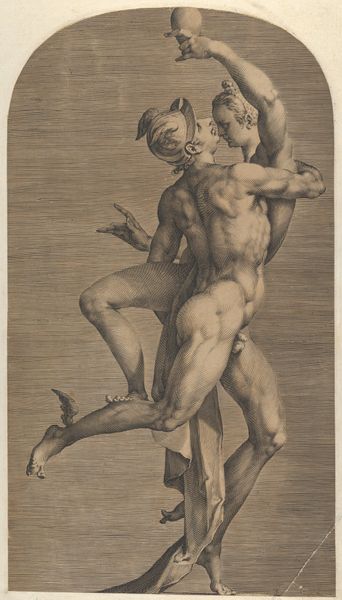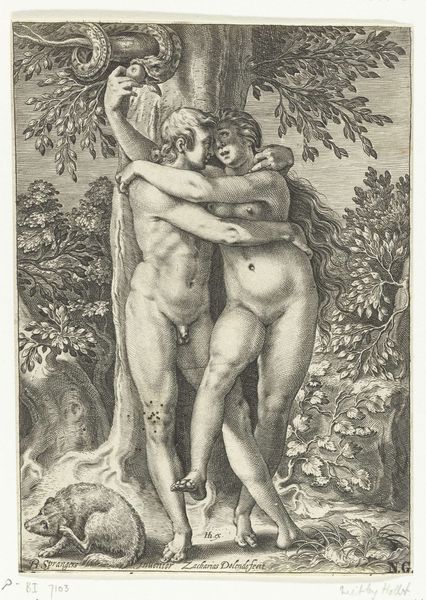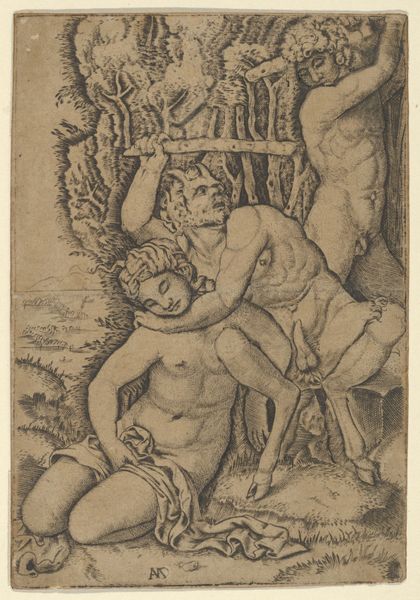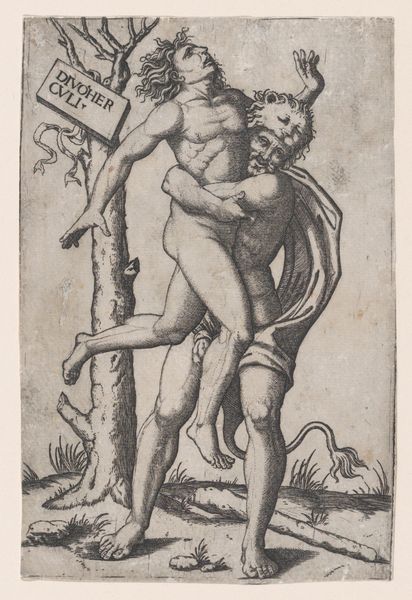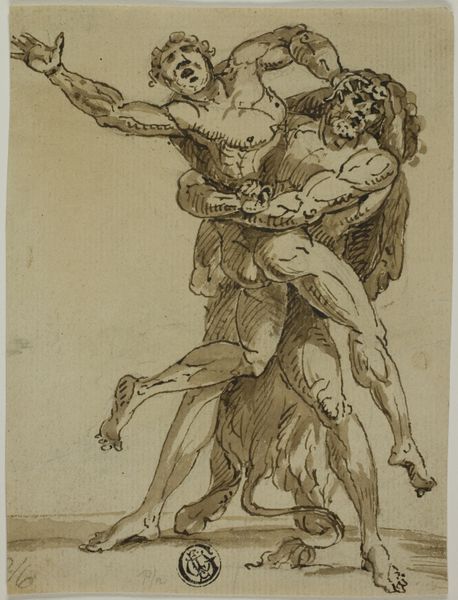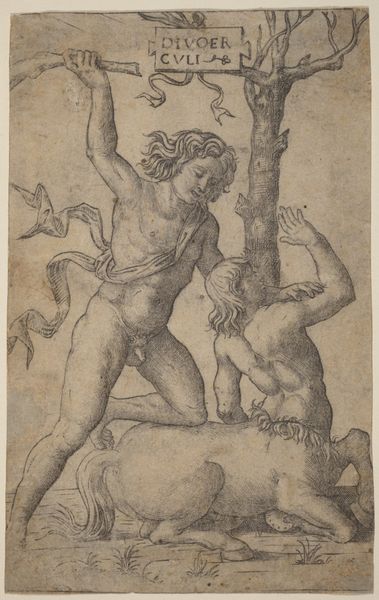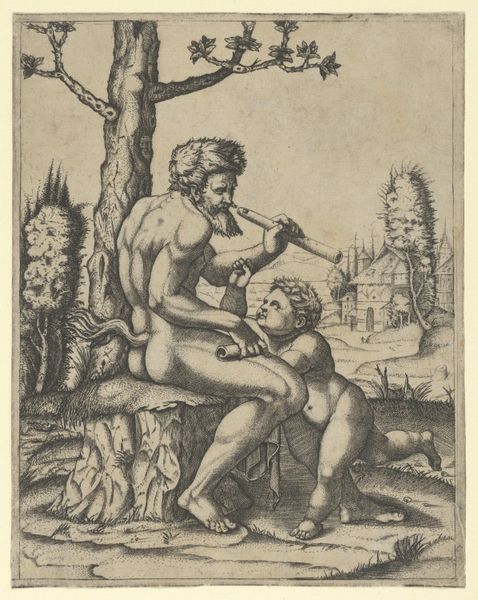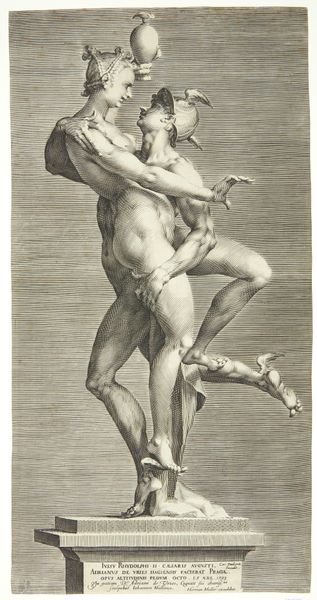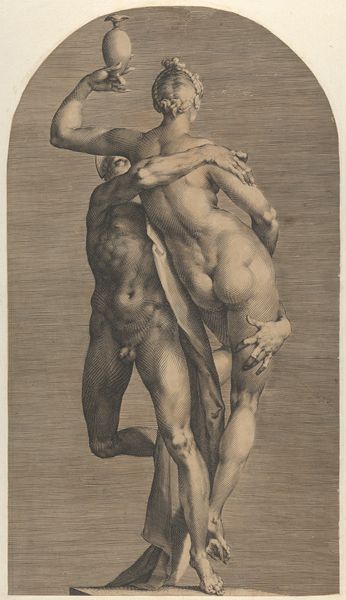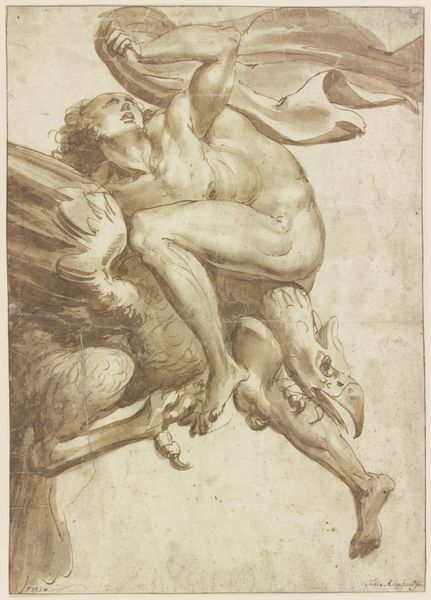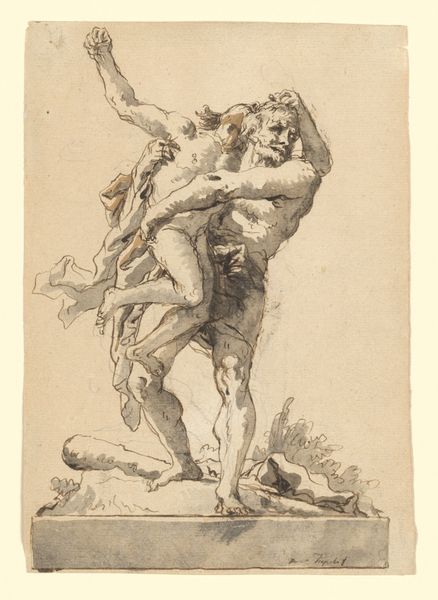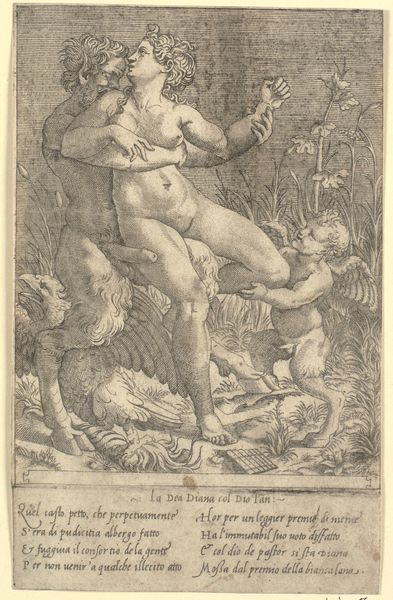
drawing, paper, ink
#
drawing
#
pencil sketch
#
figuration
#
paper
#
11_renaissance
#
ink
#
classicism
#
pencil work
#
history-painting
#
italian-renaissance
#
nude
Dimensions: height 215 mm, width 142 mm
Copyright: Rijks Museum: Open Domain
Curator: Good morning. We're looking at Giovanni Battista Scultori's "Hercules and Antaeus," a drawing rendered in ink on paper sometime between 1513 and 1575. Editor: What strikes me immediately is the palpable tension, the concentrated force in this sketch. You can almost feel Antaeus's desperation as Hercules lifts him from the ground. Curator: Precisely! Note how Scultori masterfully uses line to define the musculature, especially in Hercules's legs and back, creating a sense of dynamism. The hatching and cross-hatching give weight to the figures. It exemplifies the classical ideals of the Renaissance—a celebration of the human form and its potential for power. Editor: The myth itself is quite potent. Antaeus, invincible while touching the earth, his mother, is defeated only when Hercules recognizes this connection and lifts him into the air. This work certainly speaks to themes of power, vulnerability, and the conquest of the natural world through reason and strength. I wonder how it functioned in society. Curator: As a drawing, it’s fascinating. Is it a study for a larger work or an important image of its time? It exists now, within our context. I think its classicizing style served a didactic function. Illustrating the triumph of human ingenuity over brute force and how rulers and powers in Renaissance society might harness knowledge. Editor: That’s a fair point, that Herculean mythologising also highlights the ways authority might be asserted and how rulers were keen to see these embodied figures represented. But also it could also be that patrons used these visual metaphors, so prominent at this moment in art history, as a method for celebrating, and, indeed solidifying their place in it. Curator: And how drawing served as an excellent reproductive resource at this time, with such works shared amongst different elites, enabling these images of authority and the body to gain further traction, as it continues to today in museums like this one. Editor: Yes, ultimately a drawing such as this captures a powerful narrative of struggle, innovation and resistance, made available and visible to new audiences. Curator: An impressive drawing which provides an exceptional example of line, and demonstrates important classical themes and humanist thinking during the Renaissance period.
Comments
No comments
Be the first to comment and join the conversation on the ultimate creative platform.
